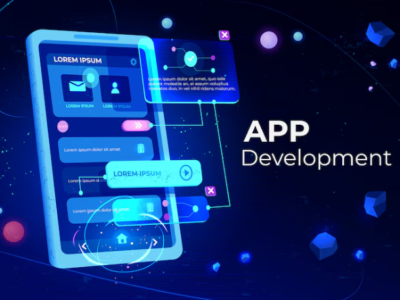
The Custom Software Development Lifecycle: Unlocking the Path to Success
Custom software development is a critical process that enables businesses to create tailored solutions to meet specific needs and goals. Understanding the custom software development lifecycle (SDLC) is essential for ensuring successful project outcomes. This article delves into the key stages of the SDLC, highlighting best practices and insights to help you navigate the journey from concept to deployment.
What is the custom software development lifecycle?
The custom software development lifecycle is a structured process that guides software development from initial planning to final deployment and maintenance. It encompasses a series of phases, each with specific tasks and deliverables, ensuring that the software meets the desired requirements and quality standards.
Key Phases of the Custom Software Development Lifecycle
1. Planning and Requirement Analysis
The first phase of the SDLC involves understanding the project’s scope and gathering detailed requirements. This phase is crucial as it sets the foundation for the entire project. Stakeholders, including business analysts, project managers, and clients, collaborate to identify the software’s objectives, features, and functionalities.
Key Activities:
- Holding stakeholder meetings to gather requirements
- Defining project goals and objectives
- Creating a project plan and timeline
- Performing feasibility studies and risk assessments
2. System Design
Once the requirements are clear, the next step is to design the system architecture. This phase involves creating detailed design documents that outline the software’s structure, components, interfaces, and data flow. The design phase ensures that all requirements are addressed and provides a blueprint for the development team.
Key Activities:
- Developing system architecture and design specifications
- Creating wireframes and prototypes
- Defining database schemas and data models
- Reviewing and validating the design with stakeholders
3. Development
The development phase is where the actual coding takes place. Developers write the code based on the design documents, following best practices and coding standards. This phase is iterative, with continuous testing and refinement to ensure the software functions as intended.
Key Activities:
- Writing and implementing code
- Conducting unit testing and debugging.
- Integrating modules and components
- Collaborating with team members for code reviews
4. Testing
Testing is a critical phase that ensures the software is free of defects and meets the specified requirements. Various testing methodologies, such as unit testing, integration testing, system testing, and user acceptance testing (UAT), are employed to validate the software’s functionality, performance, and security.
Key Activities:
- Developing test plans and test cases
- Executing tests and documenting results
- Identifying and fixing defects
- Regression testing is performed to ensure stability.
5. Deployment
Once the software passes all testing phases, it is ready for deployment. The deployment phase involves installing the software in the production environment and making it available to users. This phase also includes user training and documentation to ensure a smooth transition.
Key Activities:
- Getting the production environment ready
- Bringing the software to production
- Conducting user training sessions
- Providing user manuals and documentation
6. Maintenance and Support
The final phase of the SDLC is maintenance and support. After deployment, the software may require updates, bug fixes, and enhancements to ensure it continues to meet user needs and remains functional. Regular maintenance helps to address any issues and keep the software up-to-date with changing requirements.
Key Activities:
- Monitoring software performance
- Offering technical assistance to users
- Implementing updates and enhancements
- Conducting regular maintenance checks
The best practices for a successful SDLC
Involve Stakeholders Early and often
Engaging stakeholders throughout the development process ensures that the software aligns with business objectives and user needs. Regular feedback and communication help identify and address issues early, reducing the risk of costly changes later.
Emphasize quality assurance.
Quality assurance should be an integral part of every phase of the SDLC. Implementing rigorous testing practices and continuous integration helps identify defects early and maintain high-quality standards.
Adopt agile methodologies.
Agile methodologies, such as Scrum and Kanban, promote flexibility and iterative development. By breaking the project into smaller, manageable sprints, teams can quickly adapt to changing requirements and deliver incremental value to stakeholders.
Focus on documentation.
Comprehensive documentation is essential for ensuring clarity and consistency throughout the SDLC. Well-documented requirements, design specifications, test cases, and user manuals provide a valuable reference for developers, testers, and end-users.
Prioritize Security
Security should be a top priority in custom software development. Implementing secure coding practices, conducting regular security assessments, and proactively addressing vulnerabilities help safeguard sensitive data and protect against cyber threats.
Conclusion
Understanding the custom software development lifecycle is crucial for delivering successful software projects. By following a structured approach and incorporating best practices, businesses can create robust, tailored solutions that meet their specific needs and drive growth. Each phase of the SDLC plays a vital role in ensuring the software’s quality, functionality, and performance. Embracing this process can help organizations navigate the complexities of software development and achieve their goals effectively.










